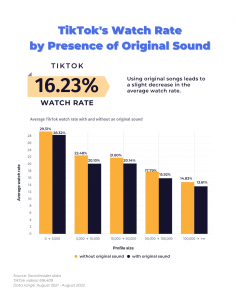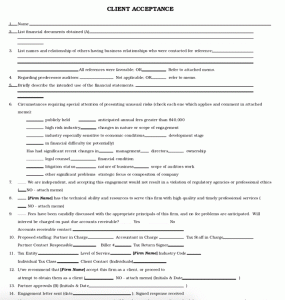The first step to a successful online marketing strategy is looking closely into the overall requirements of your company. More often than not, however, the effectiveness of a marketing strategy is offset by the inability to measure up what is really required. In some cases, it might even be counterproductive: which is why it is the CMO’s job to tackle efficiency questions for the best results. In this article, let us explore some of the yardsticks by which to measure the effectiveness of your current online strategy.
What kind of campaigns are you running?
Different kinds of campaigns have different rates of success, depending on the nature of the company, product, targeted customer and various other factors. You may have email marketing campaigns, newsletter marketing campaigns, social media marketing campaigns, online advertising campaigns running parallel to each other, but it is important to ask a few questions about your campaign before continuing in the same old direction.

How to measure the effectiveness of your campaigns?
In the long run, the goal of a successful marketing campaign is to make it entirely self-sustaining. Without a proper digital marketing tactic, you potentially stand to lose out on online market shares, online value propositions, online customers, resources such as time and money. You also stand to lose out on optimization opportunities and opportunities for improvement. Consequently, you should try to measure the effectiveness of your campaigns against certain fixed goals and achievements. You could, for instance, see how you stack up against your competitors and evaluate your rate of growth accordingly. Ask yourself, and answer, some questions about the brand’s value proposition, goals and strategies of growth, marketing channels that are currently under-utilized by your company. Check which of these fits best with your profile and requirements.
What are the tools that are used to measure the ROI of campaigns?
ROI is often taken as the proof of an effective marketing plan, and it can be measured quite easily with a few effective tools. Metrics that can help measure ROI from social media and elsewhere include:
- Goals for conversion: This is the first step where you need to define targets for online purchases, contact forms, newsletters, time spent on a page, interaction on social media, etc.
- Reach: Track reach to see how it improves over time.
- Traffic: Measure referral sources to check which strategies work more through Google Analytics.
- Leads: Keep track of traffic from blogs and websites that are converted to leads. It is important to focus on a) bounce rate, b) average page views per visit and c) average time on site.
- Customers: Check leads to also keep track of customer conversions. The popularity and effectiveness of a strategy should also take into account rate of returning visitors to a site.
- Costs: Cost per lead/cost to acquire customers is also an important factor. It is measured by dividing marketing + advertising costs by number of new, paying customers within that period.
- Rates of Conversion: Keep an account of the visit-to-lead conversions i.e. online traffic percentage from leads. Note: Top 10% of the AdWords advertisers had 11.45% conversion rates or higher.
- Audits: Social media audits can be especially helpful, but you can use emails, contact forms, etc. too
- A/B tests: Discussed below in greater detail.
How to run A/B tests to identify the effectiveness of campaigns.
A/B tests are one of the best processes for measuring campaign effectiveness. Apparently, only 28% marketers are satisfied with their current conversion rates. Naturally, A/B testing is a great way of testing out the kinks of marketing. To do so, you have to decide what to test, select treatment and control mechanisms, and create a test, promote it, gather data, and then analyze it: or simply use one of the pre-existing ones.

Simple Steps for Effective online marketing strategies
Targets
As stated before, the very first step of the process is identifying key targets. In this, you should generally set two primarily goals as well as two other secondary ones. These goals must be ethical, easy to attain, specific to your company and comply with the needs of the hour.
Objectives
Setting select marketing objects is a way of honing down on goals. By defining certain metrics of measurement, you can keep better track of goals and accomplishments. For instance, if one of the objectives is to increase sales, you need a rubric that defines a successful target. The objectives can be defined under time, relevancy, and measurability indexes for best results.
Identification
Beyond identification of goals and objectives, it is essential to know a target consumer group’s demographics and other profiles. For instance, a youth-oriented program might work better with social network advertising, whereas a mature population can be reached through email marketing strategies. The identity of the target customer profile is essential for creating an optimal online marketing strategy.
Market Identifiers
One of the main problems with most online marketing strategies is that they fall short of their competitors’. In general, it is regarded as a good practice to stay on top of a competitor’s strategic positions, and counter if required. Amazon, for instance, may be conducting extensive email marketing through the holiday season: a good competitor would know about it, and conduct their own so as to not be overshadowed.
Platforms
Here’s a simple example: LinkedIn is for professionals, Academia.edu is for researchers and professorial candidates. Your social media platform of choice is something similar. Consider your target group, and choose whether you want to advertise on Facebook, LinkedIn, or Twitter. Time is also important: e.g. Facebook users have 32% more engagement on social media on Sundays over any other day, with the best time for posts being between 12 and 1 pm.
Content Strategies
Alongside a competent marketing strategy you also require a good content strategy. The three important ideas behind it are: content type, the time of day, and the number of posts per day/week. Research shows how certain times of the day are more favorable for social media posts, for example.
Marketing Techniques
This is one of the most underrated aspects of online marketing strategies, despite its immense benefits. Without tracking measures, an online strategy can often come short of its potentials. On the other hand, through tracking measures, improvements can be brought about in segments that require them. In the next section, we shall explore this in greater detail.
How to track marketing techniques
By doing this, you open up potential communication links with your customers and stand a better chance of retention. For instance, a feedback form can be an essential part of tracking the efficacy of a marketing strategy. Here are some other options:
- Send emails with forms, thanking visitors for stopping by and then asking for a few non-mandatory answers. Keep a filing system for noting any responses.
- Use comment forms on website to create opportunities for client feedback. This is great as a tracking technique.
- Enable actionable metrics and track conversions. There are some tools that can help in performance indication.
A successful marketing strategy is based upon various metrics including target group, medium of advertising, and consequent testing mechanisms. The process is constantly growing and changing with time, making it essential to adapt as days go by. However, keeping these pointers in mind, any CMO or marketing consultant can identify the ways of tracking online marketing strategy effectiveness. Consequently, they can also discover parameters on which to align business goals and help their businesses grow furthermore.
Digital & Social Articles on Business 2 Community(98)
Report Post





